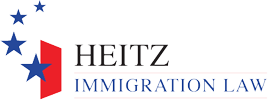It’s finally here…the filing fee increase that Immigration Law practitioners have been dreading has come. It’s been six wonderful years without an increase, but that all ends on December 23, 2016. Yes, just in time for holiday gift-giving!
If your immigration application is mailed (post-marked) on or after December 23, 2016, your enclosed check or money order for the government filing fee must be at the increased rate. If not, your case will be rejected and returned to you for incorrect fees.
Here is the reason the fees are going up, taken directly from the Office of the Federal Register:
DHS needs to increase USCIS fees by a weighted average increase of 21 percent to offset growing costs and continue to provide an adequate level of service…some USCIS fees must exceed the cost of adjudicating the respective benefit types to cover those benefits provided without charge, such as refugee benefits, asylum benefits, and other fee-exempt, fee-waived or fee-reduced workloads.
Notice that the words “adequate service” are used, a pretty good description of what you get with USCIS. It’s not exemplary service, or outstanding service or even good service…it’s just adequate.
I’m not sure what would be better. A more moderate increase in fees every year, or waiting six years to get an increase of 21%. Maybe a yearly increase of only a few percent would be easier to handle and not such a shock. Services in our economy don’t usually increase by such a dramatic amount in one day, hence the outcry from the public when this happens, despite the fact that the last USCIS fee increase was only 10% in 2010.
Citizenship applications, form N-400 for Naturalization, are the only immigration forms that will have a unique structure of matching up the filing fee cost to the applicant’s ability to pay. It’s a rather complex calculation of income as it relates to the poverty guidelines. Bottom line is, low income applicants will be able to pay less than the current fee is now, and that’s a good thing because high costs in filing fees may deter individuals from filing for citizenship, even though they are eligible.
Prices are effective December 23, 2016:
Some immigration forms qualify for a fee exemption, if the person can prove that they have limited income, are on a means-tested government benefit, or have experienced significant financial hardship. See our post on this subject: The Truth About Immigration Filing Fee Waivers.
Perhaps you or a family member are considering filing an immigration application soon. Be sure to plan ahead because you may need some time to gather documents and fulfill the requirements for your application. If you are waiting for a document that may delay your ability to file, talk to your immigration lawyer about whether it’s worth filing before the Dec. 23, 206 deadline, recognizing that you are missing a document and will get a Request for Evidence from USCIS. But at least you will be able to pay the lower fee if you send it out before December 23, 2016.
Give us a call if you need some guidance on how to deal with upcoming filing fee increases for your immigration applications.









